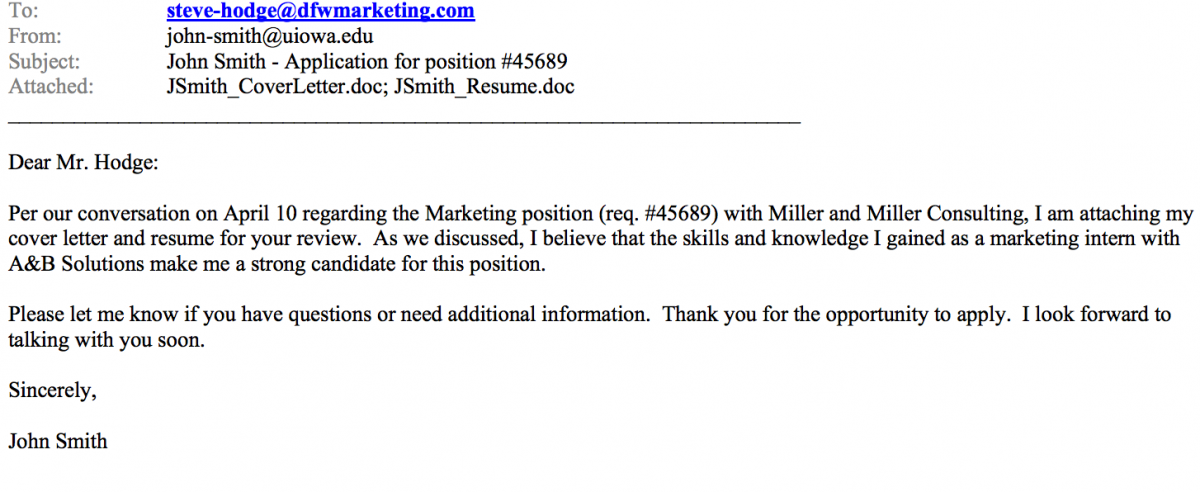Let’s re-visit this important article written by former peer career advisor Caroline Jaschke ’18.
Whether you are currently applying to jobs and internships, or will be in the next couple months, you are sure to be sending out a lot of emails. After all the work you’ll put into crafting strong resumes and letters, you want to be sure that your emails reflect this same professionalism. Emails do matter!
An email is one of your first impressions to a potential employer. It is your opportunity to show off your professionalism, your maturity, and your serious interest in the position. Emails give the employer some small insight into what it’s like to interact with you as a person. While proper email etiquette is not going to get you the job, improper etiquette will turnoff the employer and hurt your job chances.
When responding to employer emails, the old dating rule “wait three days” does not apply. You’re not trying to play it “cool” and avoid coming off as “desperate.” Slow responses signal to employers that you’re not that interested. They might not waste time waiting for your response when they have a pool of other qualified candidates. In addition, waiting for your answer might irritate an interviewer. Therefore, it’s good practice to respond to emails within 24 hours. Responding and saying that you were “really busy”, is not an excuse. The potential employer is busy too, and this excuse may make them question your ability to handle the workload at their company along with various responsibilities of the job. Use your quick response time to indicate to the employer that you consider this job a top priority.
When job and internship searching over email, using professional etiquette may encourage the potential employer to take you seriously and actually read the email. Use a professional email, not your soccerchick@hotmail.com account. Address the individual by their appropriate title (Ms., Mr., Dr., etc), write a clear subject line, and use proper grammar. Be positive, polite, and concise, but be sure to include the relevant information. If it has not already been stated that the employer would like a cover letter and resume, ask for permission to include the documents with the email. Attach your cover letter and resume, each as their own PDF, and clearly labeled with your last name (Smith_Resume). Do not paste your cover letter into the body of the email. Last, absolutely NO emoticons, no matter how perfectly the “high-five” captures your feelings about the job.
Here’s an example of what your email should NOT look like:

Here’s an example of what it should look like:

Lastly, re-read your email before you send it!
For more information on how to write emails, check out this helpful article in the balance.